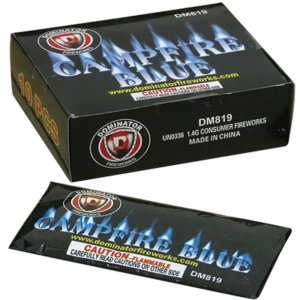The Enchanting Chemistry Behind Blue Flames: A Deep Dive into the Science 
Introduction:
Blue flames, with their mesmerizing and ethereal glow, captivate our senses and fuel our curiosity. The science behind these azure-hued flames is a fascinating journey into the intricate world of chemistry and physics. This article delves into the mechanisms, reactions, and conditions that give rise to the captivating phenomenon of blue flames.
Chemical Composition:
The color of a flame is intricately linked to the chemical composition of the burning material. Blue flames typically emerge when certain elements or compounds are present in the combustion process. Hydrocarbons containing carbon and hydrogen, such as methane and butane, are known to produce blue flames when they burn efficiently. The blue color results from the complete combustion of these hydrocarbons, yielding a high-temperature, oxygen-rich environment.
Temperature and Oxygen:
Blue flames are indicative of higher temperatures during combustion. The blue hue emerges when a flame burns at a sufficiently high temperature, typically above 2,600 degrees Celsius (4,712 degrees Fahrenheit). This elevated temperature facilitates the excitation and emission of specific electrons in the burning particles, resulting in the characteristic blue color. Additionally, the presence of ample oxygen is crucial for achieving complete combustion and, consequently, blue flames.

Incomplete Combustion and Color Variation:
While complete combustion produces blue flames, incomplete combustion can lead to variations in flame color. In scenarios where oxygen is limited, combustion may be incomplete, giving rise to yellow or orange flames. Understanding the delicate balance between oxygen availability and combustion efficiency provides insights into the color spectrum exhibited by flames, ranging from the vibrant blues to warmer hues.
Metal Ions and Flame Coloration:
The introduction of certain metal ions into a flame can also influence its color. In the context of blue flames, the addition of copper compounds, for instance, can impart a blue-green tint to the fire. This phenomenon, known as flame coloration or flame test, is often utilized in analytical chemistry to identify the presence of specific elements based on the observed flame color.
Applications and Observations:
The science of blue flames extends beyond theoretical understanding to practical applications. Industries such as metalworking, where high temperatures are crucial, leverage the knowledge of flame colors to assess the efficiency and conditions of combustion processes. Furthermore, astronomers utilize the information derived from the color spectrum of celestial bodies to gain insights into their composition and temperature.
Environmental Impact and Safety:
While the allure of blue flames captivates, it is essential to consider the environmental impact and safety aspects. Certain materials releasing toxic compounds may produce blue flames, emphasizing the importance of responsible usage and disposal practices. Moreover, understanding the science of flame coloration aids in developing safety measures to mitigate risks associated with high-temperature processes.
Conclusion:
The science of blue flames invites us into a realm where chemistry, physics, and aesthetics converge. From the molecular dance within hydrocarbons to the vibrant hues observed in flames, this exploration underscores the beauty and complexity of the natural world. As we unravel the intricacies of blue flames, we gain not only a deeper appreciation for the phenomena but also valuable insights into fundamental scientific principles.